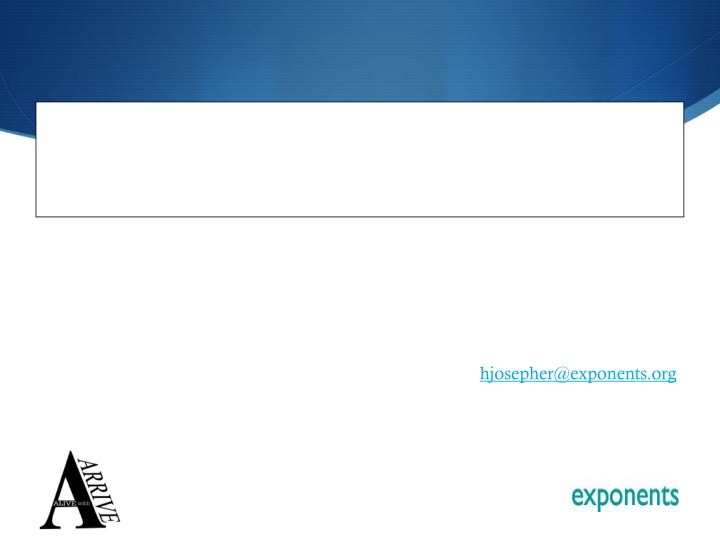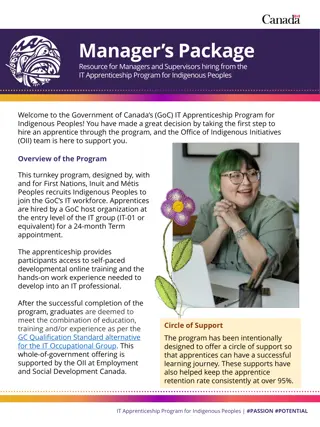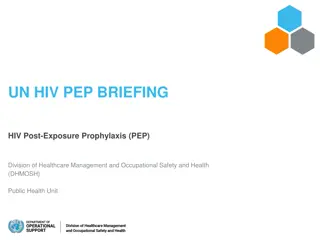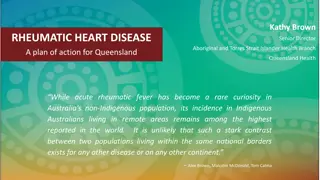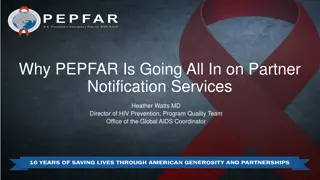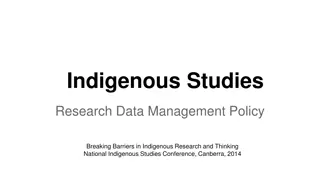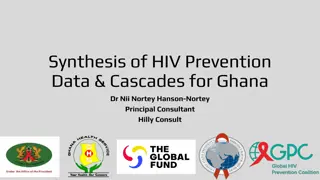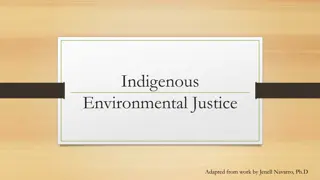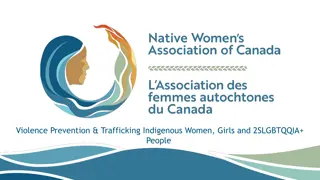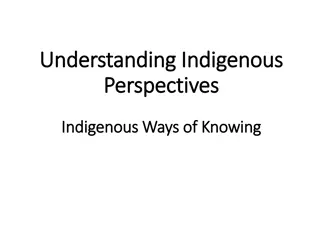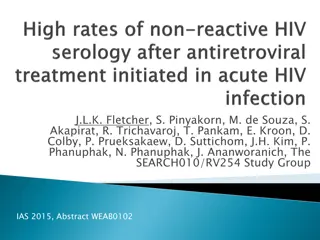The ARRIVE Model: Indigenous NYC-Based HIV Prevention Education
"The ARRIVE Model is an evidence-based program founded by Howard Josepher to address HIV prevention and substance use among at-risk individuals in NYC. Developed with funding from NIDA, it incorporates psycho-education, peer support, community creation, and advocacy to empower participants. The program consists of 2.5-hour sessions over eight weeks focusing on self-management skills to address chronic health conditions and reduce transmission risks. It welcomes active/recovering substance users and individuals with criminal justice histories, emphasizing harm reduction."
Download Presentation

Please find below an Image/Link to download the presentation.
The content on the website is provided AS IS for your information and personal use only. It may not be sold, licensed, or shared on other websites without obtaining consent from the author.If you encounter any issues during the download, it is possible that the publisher has removed the file from their server.
You are allowed to download the files provided on this website for personal or commercial use, subject to the condition that they are used lawfully. All files are the property of their respective owners.
The content on the website is provided AS IS for your information and personal use only. It may not be sold, licensed, or shared on other websites without obtaining consent from the author.
E N D
Presentation Transcript
The ARRIVE Model An Indigenous NYC- Based Model of HIV Prevention Education for HIV+ and at-risk Substance Users Howard Josepher, LCSW Founder, President/CEO - Exponents hjosepher@exponents.org 212.243.3434
History ARRIVE was developed by Howard Josepher, LCSW at the request of NDRI with 3-year demonstration funding (1987 1990) from the National Institutes of Drug Abuse (NIDA) Original Name: AIDS Risk Reduction for Intravenous Drug Users and Ex-Offenders 1988 Triple epidemics of HIV/AIDS, Injection Drug Use/Crack and Violence (Syndemics). Mandate: Engage recently released parolees known to have IDU histories.
Evidence-Based Practices Psycho-education (proven highly successful working with individuals with mental illness) provides insight into motivational circumstances/situations that prompt individuals to self- medicate Peer Support/Role Modeling provides ongoing inspiration that participants can transform their lives through the adoption of new, healthier behaviors Creation of Community breaks the destructive cycle of isolation and depression often brought on by sustained drug/alcohol use; (re)ignites an acknowledgement of the individual s spiritual self Advocacy on Behalf of Participants relays genuineness, concern for overall well-being, and continued success. Social Learning Approach - close contact (community, small team breakdowns), imitation of superiors (peer engagement), understanding of concepts (psycho- education), role model behavior.
Evidence-Based Theory Stages of Change Stages of Group Development Psycho-education
Description ARRIVE is an eight-week program; it is delivered through twenty-four 2.5-hour psycho- educational and health & wellness sessions (similar to a 3-credit college course). The program incorporates psycho-education and health & wellness information disseminated in large group settings with smaller discussions (called team-breakdowns) as well as support groups for at-risk and HIV+ participants and individual counseling. It s primary purpose is to teach self-management skills to address chronic health conditions (addiction, HIV, HCV) and reduce the infection/transmission risks to themselves and their sexual and drug-sharing partners. Through personal investment in the process, participants enhance self-esteem. A large number of participants have criminal justice histories and have encountered long periods of homelessness. Active and recovering substance users are welcomed HARM REDUCTION.
Core Elements Ongoing engagement of each participant at multiple levels: psycho-educational and health & wellness informational sessions support groups small team breakdowns individual counseling All facilitated by past graduates, recovering individuals, persons with compromised immune systems and formerly incarcerated. (PEERS)
Evidence of Effectiveness Successfully implemented for more than two decades More than 9,500 graduates all of whom attend voluntarily Current waiting list extends to October cycle. Exponents is the largest contract under the current portfolio of HRR awards. Funded through NYCDOHMH/HRR since 1991. Cited in SAMHSA s TIP 44 (substance abuse treatment for adults in the criminal justice setting) as an evidence-based practice
Evaluation Data Two external evaluations have been conducted on the ARRIVE model: 1991 - Wexler, H., Magura, S., Beardsley, M. 2009 - Barreras, R., Drucker, E.
Evaluation Findings (1991) 394 parolees w/histories of IDU (81% male, 57% Black, 33% Latino/Hispanic; avg. age: 35) Sixty-one percent were engaged in the intervention (experimental group) Sixty-eight percent completion rate Substance use-related findings: Compared to individuals in the comparison group, participants were less likely to have friends who were IDUs, reported lower frequencies of cocaine sniffing and marijuana smoking, and had more involvement in substance abuse treatment programs.
Evaluation Findings (contd) Participants were: more likely to be tested for HIV less likely to have been arrested possessed higher levels of employment during the follow-up period.
Evaluation Findings (2009) 71% OF CURRENT OR FORMER DRUG USERS REPORTED AN INCREASED ABILITY TO DEAL WITH STIGMA 41% INCREASE IN SELF-EFFICACY RELATED TO EMOTIONAL RESPONSE TO HIV STATUS 30 % INCREASE RELATED TO HIV DISCLOSURE SELF-EFFICACY 37% INCREASE IN HIV TREATMENT ADHERENCE
Recommendations for future HRR-Supported Programming Content: Evidence-Based Practices Context: Non-judgmental engagement (flexible continuum) Strength-based vs. Deficit-based Person-centered (provide recovery options) Holistic Wellness Approach (PCSI) Environment that is peer-informed and peer-led
